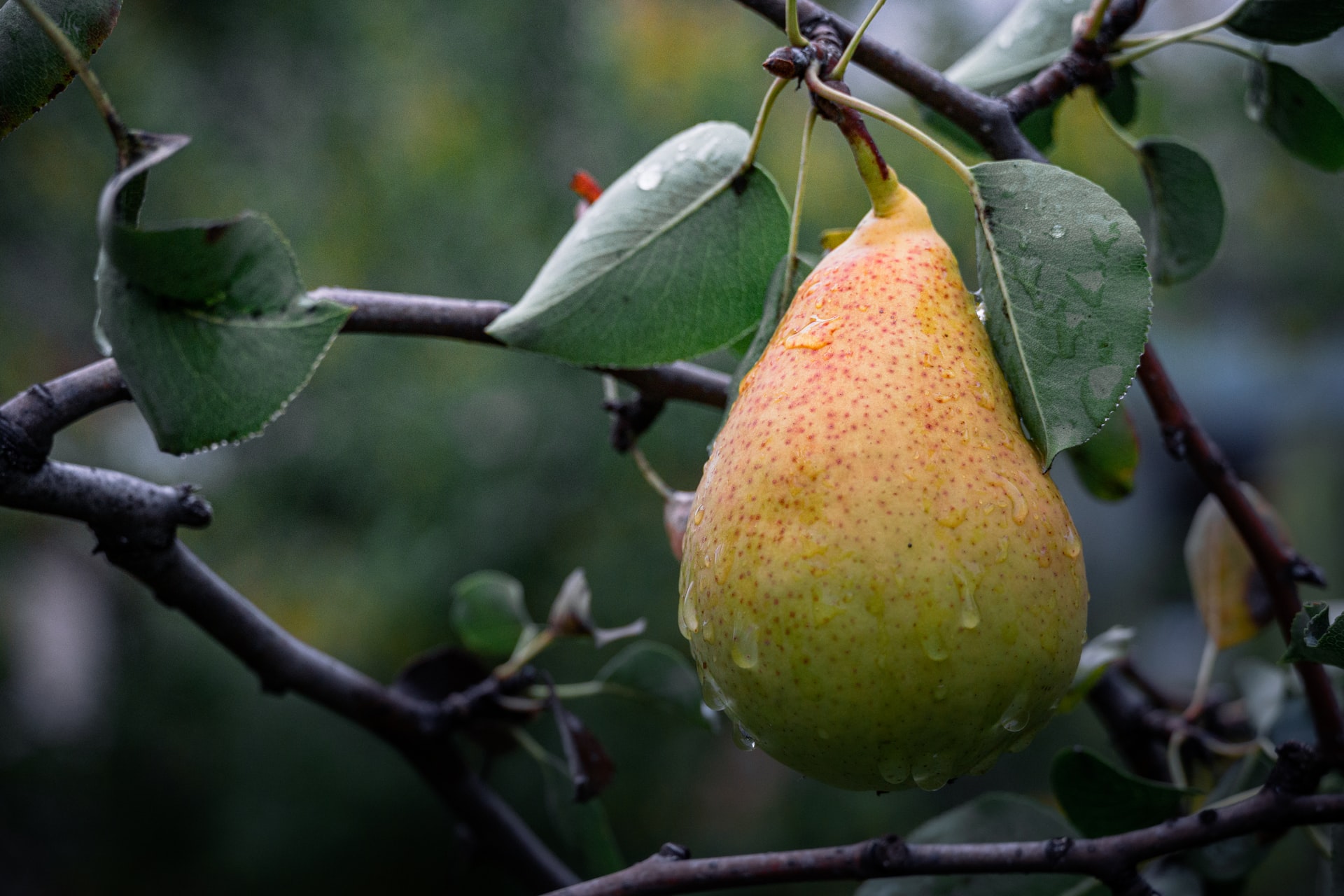The choice of growing form for pear is similar to that for apple. Pear, like apple, can be grown and easily adapted to different cultivation forms and cultivation systems. The most common growing forms are the pyramid, spindly bush, regular and irregular palmette with oblique branches and various cordons.
If you want to grow pears as easily as possible, then the best growing form is the tiered pyramid that pears tend to form naturally.
Slender stem, very slender stem, improved vertical cordon – grown on quince MC and ADAMS, and less often on quince MA.


Improved vertical cordon
It is a growing form in a direction that has a central axis or conductor on which there are only short bearers of native wood. The diameter of the crown is 0.3 to 0.5 m, the shape of the crown is a roller, and the height of the tree is 2.2 to 2.5 m. The bearers of native wood are replaced during cultivation when they become too developed. If the pear is grown as this form, then it is planted at an inter-row distance of 2.8 to 3.2 m, and within the row at a distance of 0.3 to 0.5 m, which amounts to 6,250 to 11,900 trees/ha.
An ordinary pyramid
Today, it is being abandoned more and more because it has a smaller total fertile area.
A spindly bush
The form used in intensive plantations if the pear is grafted onto quince. On the conductor, the skeletal branches are spread spirally on all sides at a distance of 15 to 20 cm from each other. Branches with a conductor close a 90° angle. This form of cultivation is characterized by a low trunk that reaches a height of 40 to 50 cm from the ground, while the whole tree is 2.5 to 3 meters high.
Slender spindle
A newer form of cultivation and it is most often used for intensive commercial orchards. The pear is then grown in a medium-dense or dense structure. This growing form contains a conductor on which skeletal branches of the first order of branching develop in the lower part, and on them the forms of fertile and non-productive shoots. In the upper part, instead of skeletal branches, fertile and non-fertile sprouts develop directly from the conduit. The skeletal branches are removed at an angle of 60°, and the trunk is 50 cm high. For this cultivation form, the pear must be grafted onto the quince.


Plamenta
Of the flat cultivation forms, we should mention the free or irregular palmette, which can be used for pear in a dense group if it is grafted on MA quince. This breeding form consists of a conductor on which 8 to 10 skeletal branches of the first order are freely arranged. Skeletal branches can be directed horizontally, but most often they are directed obliquely. The first skeletal branches branch off at a height of 50 cm, then every 35 to 50 cm, new branches branch freely to the right and left in the direction of the row. The first skeletal branches form an angle of 45° with the conductor, and as they climb towards the top of the branch, they diverge at an angle of 60°. Pear seedlings are planted at a row spacing of 1.5 to 2.5 m and an inter-row spacing of 3 to 4 m.
All types of cordons can be used – vertical, horizontal, oblique and combined. Combined cordons can be single or double “U” shape, candlestick shape and “Y” cordons so called. Belgian fence.













































